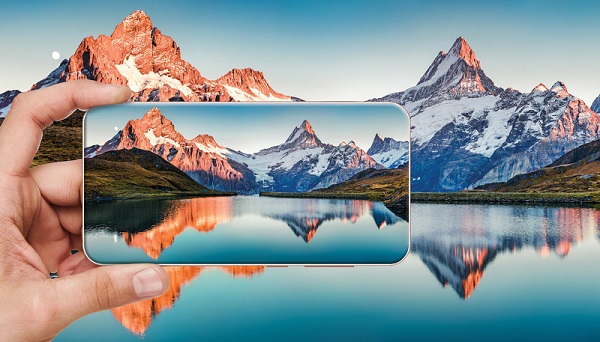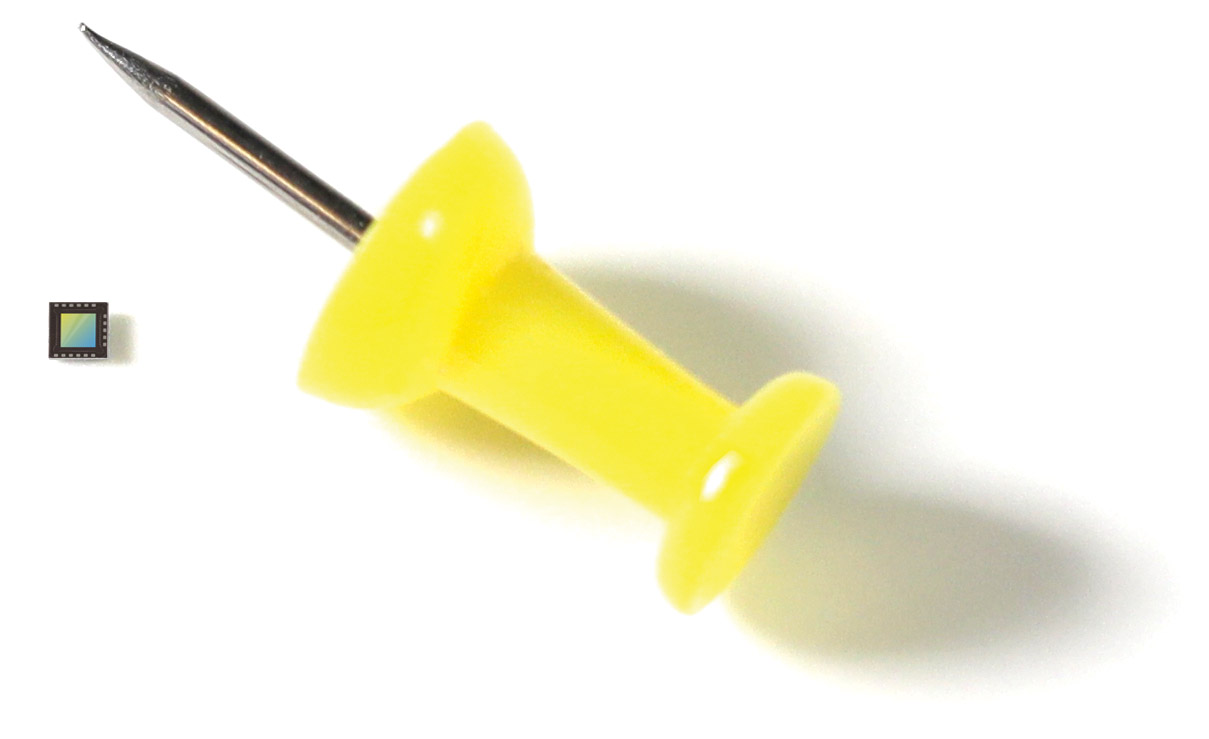
OMNIVISION Achieves Two Sensor Firsts
Semiconductor technology and digital image company OMNIVISION has developed pixel technology that is smaller than the wavelength of red light. The company’s OVBOA is a 200-MP image sensor with a pixel size of 0.56 μm. It is designed for rear-facing main cameras in high-end smartphones. The device features 16-cell binning capability, enabling it to achieve video capture of 12.5-MP/4K at 120 fps. The technology additionally features 100% quad phase detection (QPD) for more effective autofocus.
According to Arun Jayaseelan, senior product marketing manager at OMNIVISION, OVB0A’s 0.56-µm pixel is the first in the world smaller than the wavelength of red light.
“Leveraging our PureCel Plus-S stacked-die technology, we can maintain extremely high resolution in the smaller 0.56-µm pixel size, packing 200 million pixels into a 1/1.4-in. optical form factor,” Jayaseelan said.
In addition to a video capture of 12.5-MP/4K at 120 fps, the sensor achieves 12.5-MP/4K at 60 fps with 2-exposure staggered HDR timing. An on-chip re-mosaic function enables 8K video and 2× crop zoom (with HDR) at 12.5 MP.

OMNIVISION’s OVB0A image sensor has a pixel size smaller than the wavelength of red light. Courtesy of OMNIVISION.
Samples of the image sensor will be available in the fourth quarter of 2022.
In a separate development, OMNIVISION announced what it said is the industry’s first and only three-layer stacked BSI global shutter (GS) image sensor. The OG0TB is for eye and face tracking in AR/VR/MR devices. The device features a package size of 1.64 mm × 1.64 mm. It has a 2.2-μm pixel in a 1/14.46-in. optical format. It features 400 × 400 resolution and ultralow power consumption, ideal for some of the smallest and lightest battery-powered wearables such as eye goggles and glasses, according to the company.

OMNIVISION’s OG0TB global shutter image sensor is reportedly the world’s smallest image sensor designed for AR/VR/MR devices. Courtesy of OMNIVISION.
“Ultralow power consumption is critical for these battery-powered devices, which can have 10 or more cameras per system. Our OG0TB BSI GS image sensor consumes less than 7.2 mW at 30 frames per second,” said David Shin, staff product marketing manager of IoT/Emerging at OMNIVISION.
The latest developments build on previous results that the company has reported in the last two years. OMNIVISION announced its 0.61-μm pixel 4K image sensor in May 2021. Earlier in 2021, the company reported it had quadrupled the resolution and reduced the size of what had been the world’s smallest commercial image sensor.
Samples of the OG0TB GS image sensor will be available in the third quarter of 2022, and mass production is expected in the second half of 2023.
/Buyers_Guide/OMNIVISION/c10721
Published: September 2022
Glossary
- augmented reality
- Augmented reality (AR) is a technology that integrates digital information, typically in the form of computer-generated graphics, images, or data, with the real-world environment in real-time. AR enhances the user's perception of the physical world by overlaying or combining digital content onto the user's view of the real world, often through devices like smartphones, tablets, smart glasses, or specialized AR headsets.
Key features and principles of augmented reality:
Real-time...
- virtual reality
- Virtual reality (VR) is a computer-generated simulation of a three-dimensional environment or experience that can be interacted with and explored by an individual using electronic devices, such as a headset with a display. VR aims to create a sense of presence, immersing users in a computer-generated world that can be entirely fictional or a replication of the real world. It often involves the use of specialized hardware and software to provide a fully immersive and interactive experience.
...
- metaverse
- The term "metaverse" refers to a collective virtual shared space, created by the convergence of virtually enhanced physical reality and persistent virtual worlds. It is a concept derived from science fiction and popularized in literature, movies, and video games. In its essence, the metaverse represents a virtual universe where users can interact with each other and digital environments in real-time.
Key characteristics of the metaverse include:
Immersive virtual environments: The metaverse...
- wavelength
- Electromagnetic energy is transmitted in the form of a sinusoidal wave. The wavelength is the physical distance covered by one cycle of this wave; it is inversely proportional to frequency.
- pixel
- A pixel, short for "picture element," is the smallest controllable element of a digital image or display. It is a fundamental unit that represents a single point in a raster image, which is a grid of pixels arranged in rows and columns. Each pixel contains information about the color and brightness of a specific point in the image.
Some points about pixels include:
Color and intensity: In a colored image, each pixel typically consists of three color channels: red, green, and blue (RGB). The...
BusinessSensors & DetectorsImagingcamerasaugmented realityvirtual realitymixed realitymetaverseARVRMROmniVisioncell phonesmart phoneheadsetwavelengthpixelglobal shutterOG0TBOVB0AAmericaseye-trackingFace TrackingPureCelPlus-Sstacked dieThe News Wire